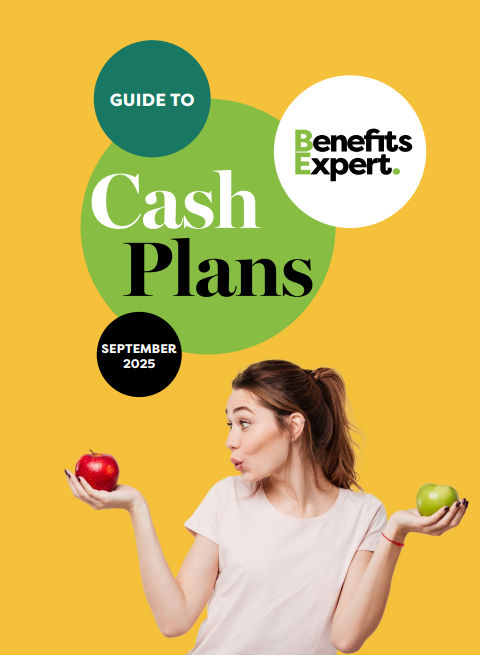With 2.8 million people on long-term sick leave, workplace absence remains a huge issue. Holly Coe, senior reward consultant at Innecto, argues that genuine work friendships, built on recognition and psychological safety, can aid efforts to tackle absenteeism and power up your culture and wellbeing.
When the government published its Get Britain Working Whitepaper in November 2024, it laid bare some stark figures relating to worker wellbeing and absenteeism. The paper cited “2.8 million people locked out of work due to long-term sickness” and claimed that mental health accounted for 25 percent of the rise in long-term sick among 16 to 49-year-olds between 2019 and 2022. Friendship may not appear in a balance sheet, or on many board meeting agendas, but its value to organisational culture and employee wellbeing is immeasurable.
The pandemic was seismic for employment, affecting workers and businesses and creating an expectational shift around how, when and where people work. While a new element of choice has worked well for some, for others it created mental health-induced absence and anxiety through a lack of engagement, interaction and connection: a lack of work friendship.
Psychological safety is paramount
In a world where workplace cultures are increasingly hybrid and fast-paced, meaningful human connection is more valuable than ever. So, how can employers cater for these needs in a way that acknowledges the growing importance of psychological safety?
The key to psychological safety at work lies in everyone feeling confident and comfortable being themselves: free to ask questions, make mistakes, be honest and open about who they are. Encouraging friendship and collaboration at work is one way of fostering this and the International Day of Friendship, celebrated on 30 July, offered a timely reminder of the importance of relationships, both personal and work-related.
Recognition at work
One of the best ways to encourage positive behaviour at work, and keep workers motivated and engaged, is through recognition. Where leaders integrate recognition into everyday culture and business practice – for example rewarding effort, persistence, performance or reaching a milestone – appreciation becomes second nature.
There is a superpower behind leaders, managers and peers saying ‘thank you’. Especially where companies cannot afford big pay increases – and many cannot – recognition can reward staff in a way that encourages positive behaviour and reflects the company’s culture.
There are different ways to say and offer thanks. Employer-employee recognition might take a monetary form, for example a voucher for coffee or something more expensive and personalised. Peer-to-peer ‘friendship’ recognition might be non-monetary, recommending someone on LinkedIn, sending an e-card, offering a rota change or simply saying thanks for going the extra mile.
The onus on the company is to set the wheels in motion because, given this kind of positive affirmation, workers – and particularly the younger generation who tend to be more purpose-driven – thrive through feeling valued and are also more likely to stay, boosting retention. And receiving recognition and thanks from a peer fosters the kind of friendship and mental wellbeing that creates a happy workforce.
Recognition from scratch
So how can you set up a recognition strategy from ground zero?
Step 1: align recognition strategy with your business
Think carefully about how you want to align recognition with your business culture and values and with employee and business objectives. What is important for you to recognise? Which behaviours or results do you want to encourage and see more of?
Step 2: plan from budget to delivery
Start with your budget to determine the scale and scope of recognition. Can you allocate an amount per person per year? Do you want a peer-to-peer or manager-to-team member model? Consider how you will stock or store any rewards and the mechanism for distribution: doing things manually gains from the personal touch but can delay reward and exclude remote or hybrid workers. Could you achieve better return on investment from building it into an HR app that integrates recognition alongside other employee benefits and services?
Step 3: Define policies and processes
Never assume recognition will simply happen. Following it through should be part of someone’s KPIs. They should also map things out in a way that answers key questions: how can I give or receive recognition? How often? What do rewards include? What makes the system fair, transparent and consistent?
Step 4: Communicate
Think carefully about effective communication throughout the lifecycle of recognition, especially if you are putting something in place from scratch. Many companies give their scheme its own mini-brand or create engagement by running a competition to name it. Again, do not assume people will simply switch on.
As businesses, we need to stop ticking ‘wellness’ boxes and instead provide tangible ways for people to feel good at work. A big part of that is giving them ways to build and grow friendships and connections. The collaboration and loyalty businesses receive in return can pay back handsomely. Absenteeism falls and productivity climbs as a happier and safer workforce rises to the challenge.
Can you put something in place before next year’s International Friendship Day? You have until 30 July 2026.












